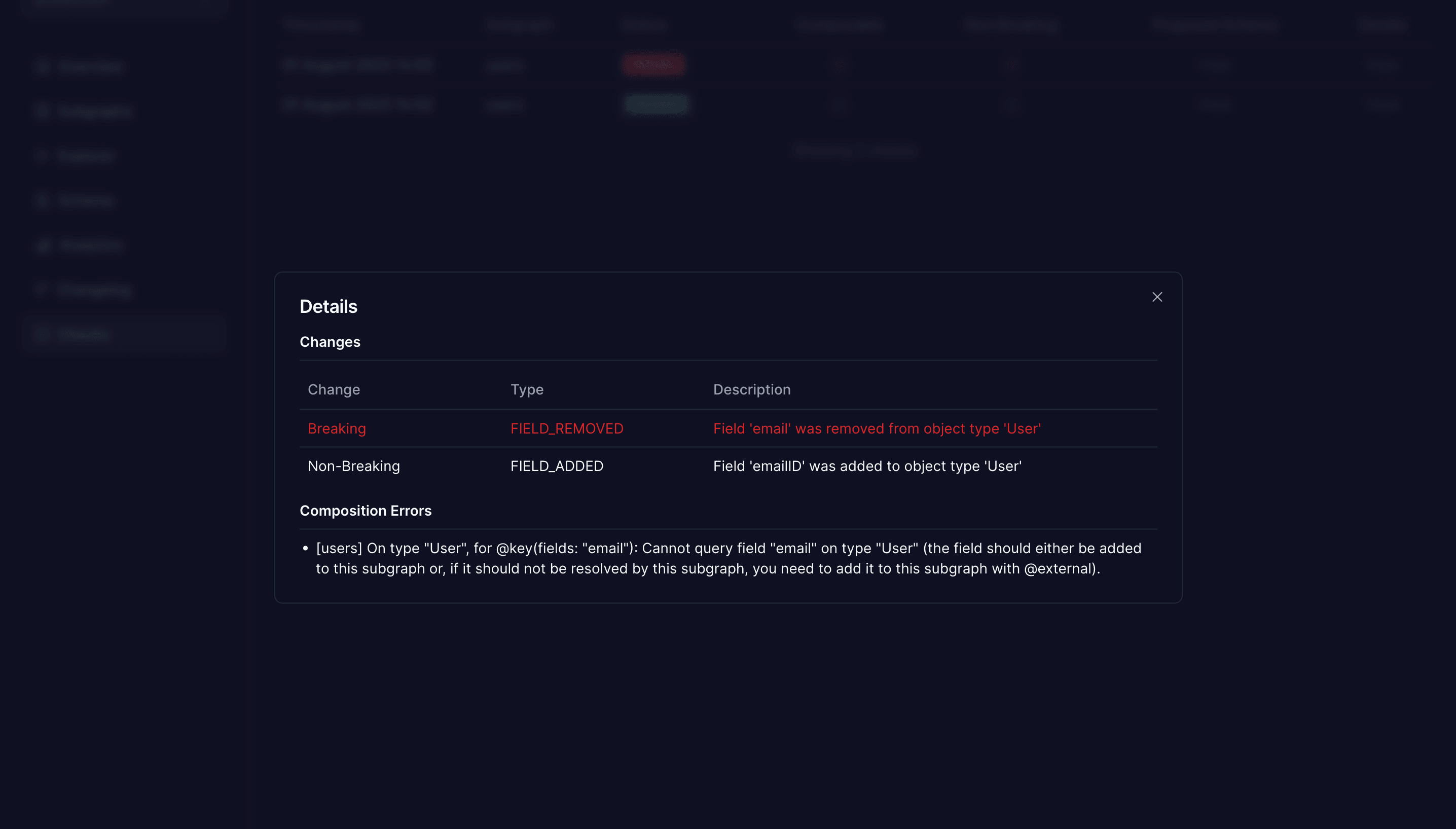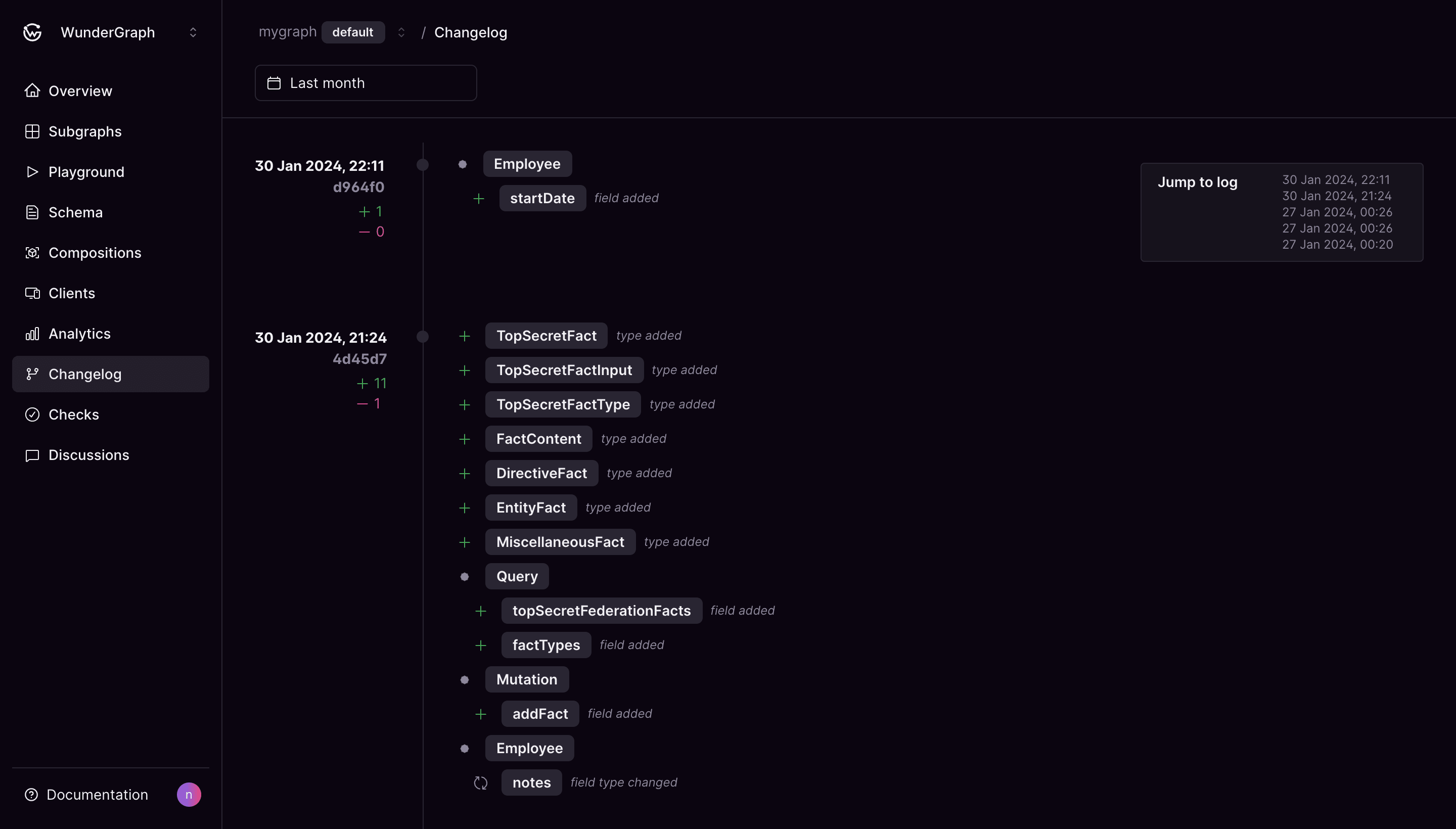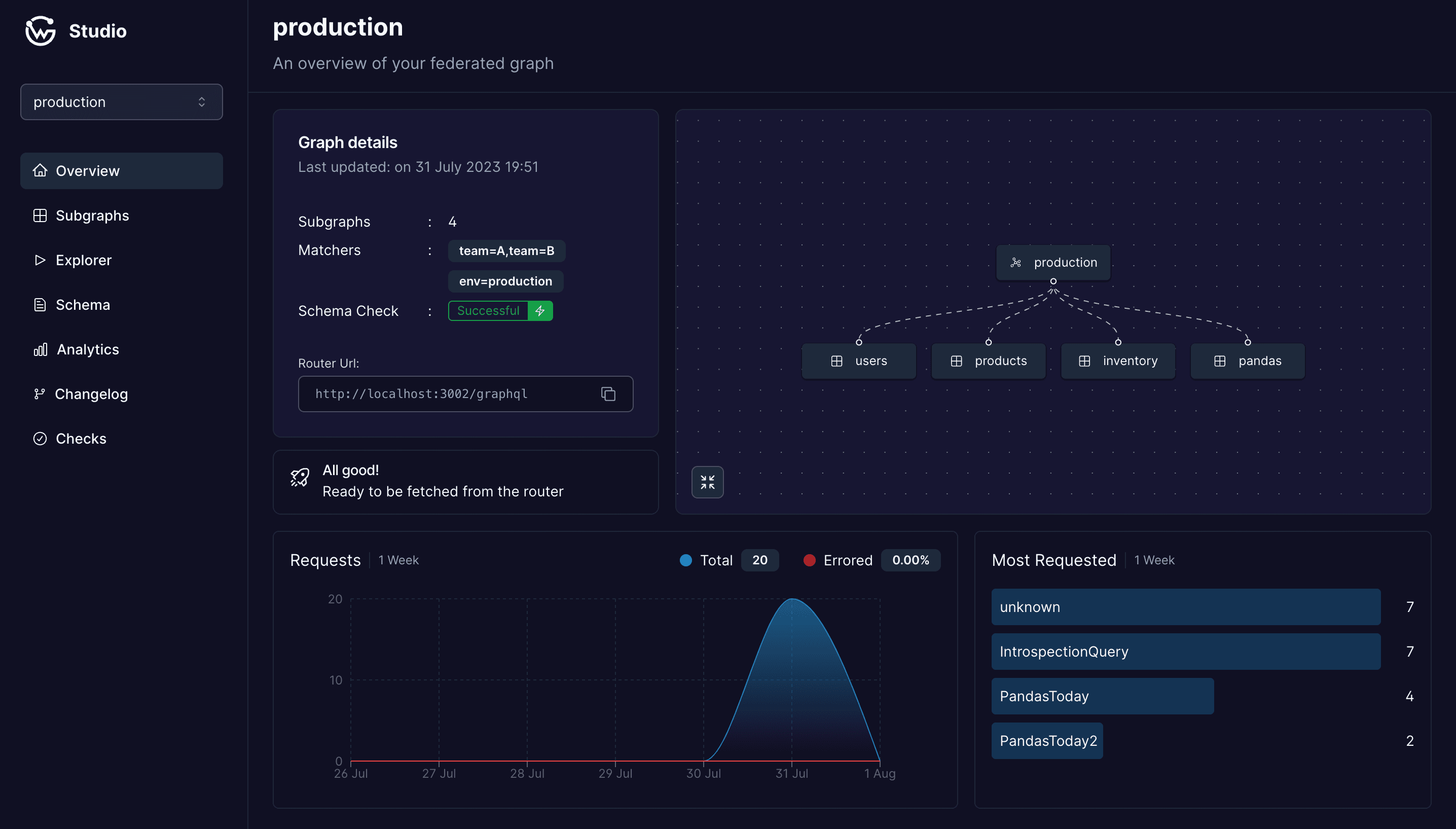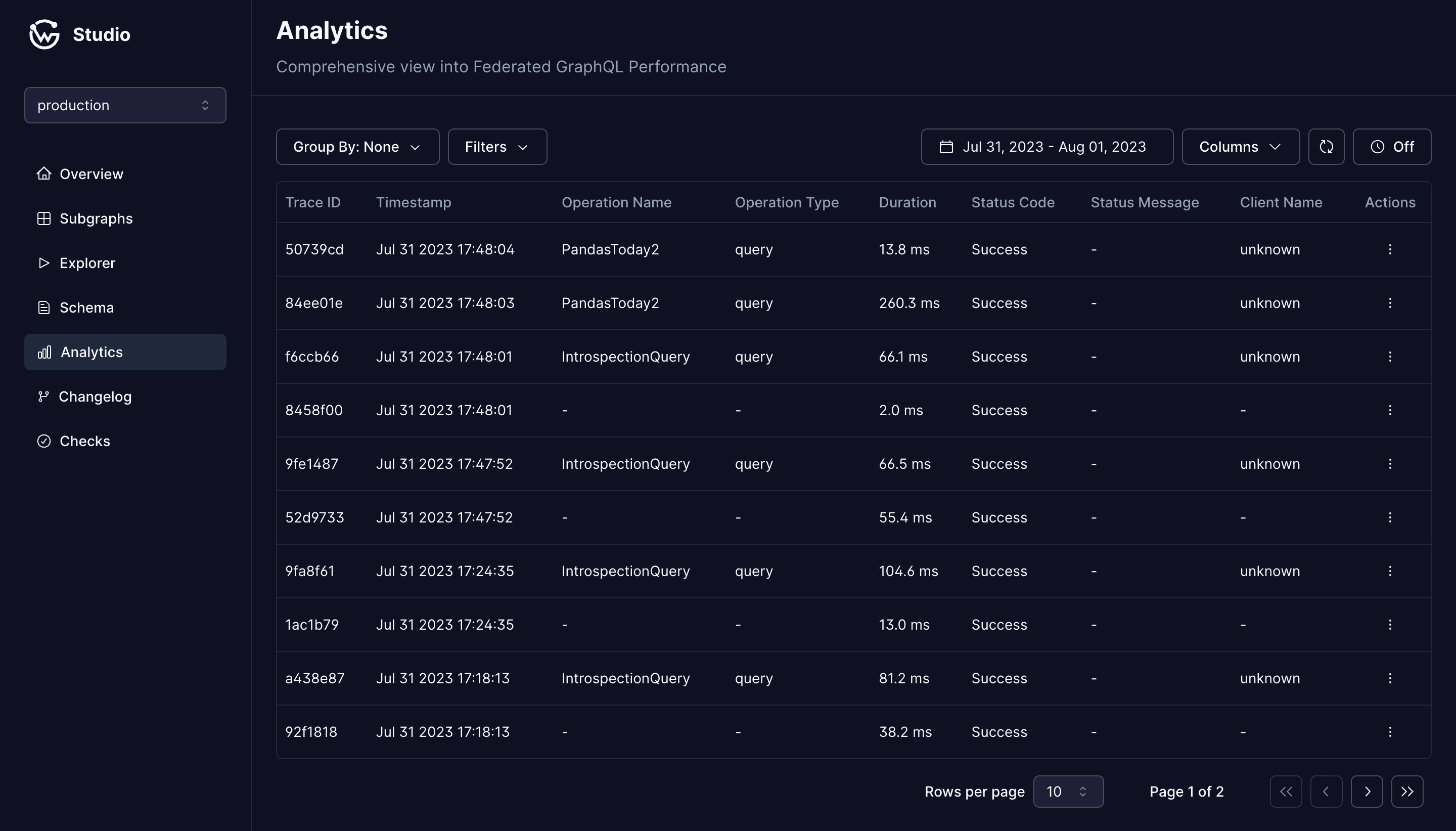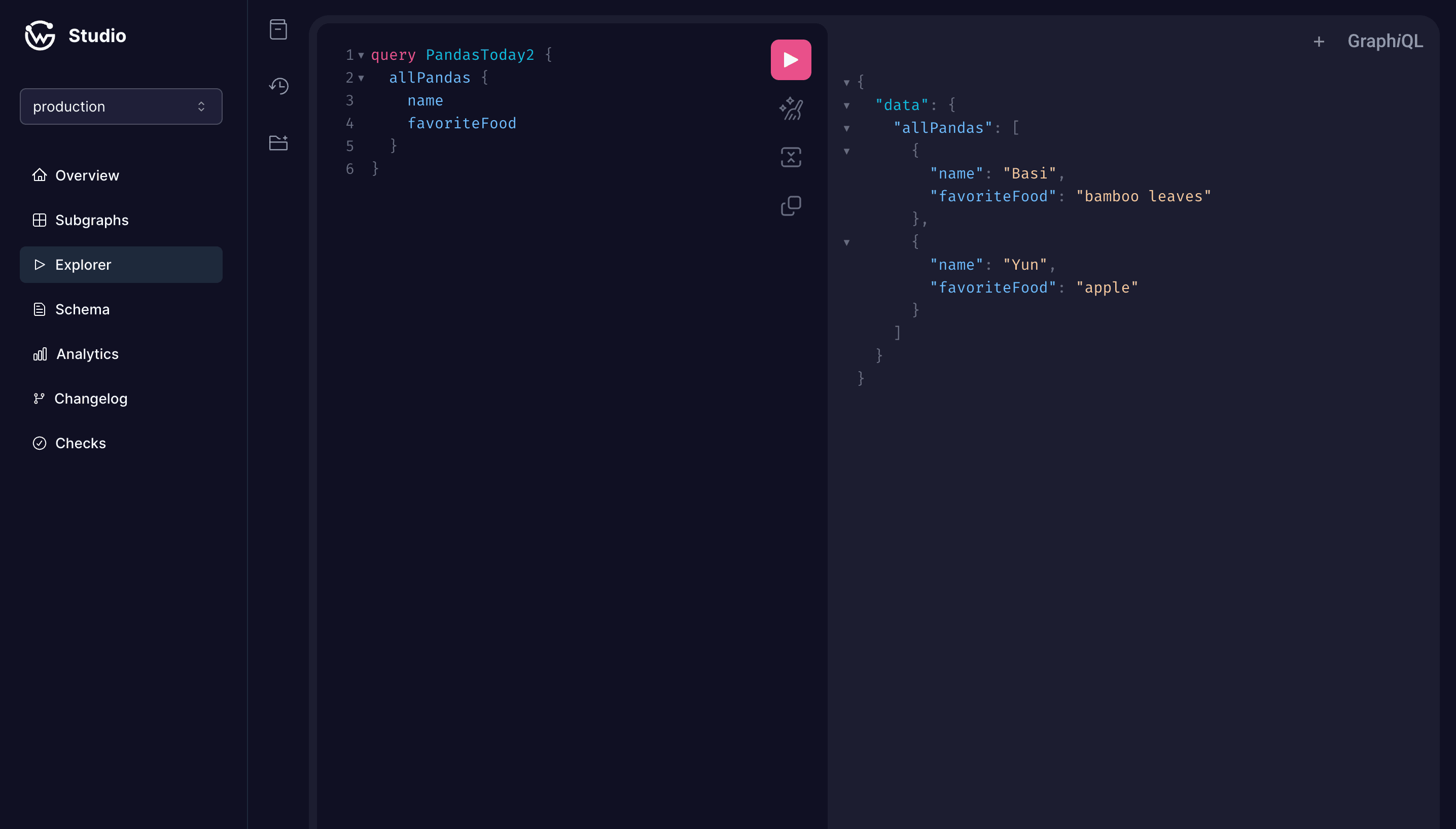The more microservices you have, the more difficult it is to observe and connect them.
Use Federation to connect, observe and collaborate on your microservicesAuto-generate a unified API surface from your microservices. Cosmo can manage federated APIs across teams with no coordination overhead required.
Federation: unified microservices
GraphQL Federation is a concept or architecture model to combine many GraphQL schemas into a single GraphQL API
Instead of querying every single microservice, GraphQL Federation enables developers to communicate with any number of microservices using a single request.
Together with a Federation platform like Cosmo, this concept delivers substantial efficiency gains when working with many microservices across larger organizations.
With a Federation platform come more benefits, such as observability, breaking change detection, or tracing.
Federation enables GraphQL collaboration at scale
Say goodbye to breaking changes
Federation as a concept allows you to merge all of your microservice data Graphs into one single Master Graph automatically. This is possible because breaking changes are identified and visualized before such commits are approved. This allows every developer to safely consume data from this Master Graph, and makes your software much more robust. Collaboration on data provided by the Master Graph does no longer need to be closely coordinated to prevent bugs and merge conflicts which take time to resolve.
Federation creates one single source of truth for all your dev teams: a unified GraphQL API to query any microservice.
Developers can work on their microservices independently. When they do a commit, the Federation platform will validate it and prevent breaking changes.
Due to the independence of the dev teams, the coordination effort on changes is reduced significantly, especially at scale.
As a result, software robustness also increases, which means less debugging effort.
Last, but not least, a Federation platform will track all changes in a comprehensive change log to help indetify the source of problems.
You Can’t Scale Federation Without Understanding Graph Usage
Observability for federated Graphs
A Federation platform provides visibility into the use of all subgraphs and the Master Graph. This is a must-have for Dev team / DevOps managers.
You should be able to tell which consumers exist, who collaborates on which subgraphs, what kind of data they use, and how much requests they make.
Advanced features such as distributed tracing, as provided by the Cosmo platform, will help you understand how a request is processed end to end.
If you use your own analytics stack, make sure you can extract Federation usage data through OTEL
The Cosmo platform enables GraphQL Federation
Federation made simple with Cosmo
The Cosmo platform comes with a Router as the core component. Acting as an API gateway, it orchestrates the requests to your microservice APIs and needs to be able to scale with the volume of requests.
A control plane with CLI allows CI/CD integration of all Federation operations. In addition to that, Cosmo Studio as UI provides visualizations of your Master Graph and subgraphs. It also lets you check logs and tracing information, and allows you to do most of the CLI-based operations as well.
Finally, if you want to keep the metrics within your stack, you need a metrics collector like OTEL. You can find out more about what's needed and how the components work together in the Cosmo documentation below. Last but not least, with Cosmo you choose an open-source solution that you can run on-prem. This helps to keeps cost down, adds transparency (important for compliance) and provides maximum flexibility without vendor lock.
Cosmo Router/Gateway implements GraphQL Federation v1 and v2, playground included. It is fast, robust, scalable and secure.
Cosmo CLI allows direct access to the control plane to integrate seamlessly with your CI/CD pipeline.
Cosmo Studio is the UI to explore and manage your subgraphs and Master Graph. Access comprehensive analytics and traces, log files or the list of requested changes.
The changelog and schema explorer tell you exactly how your GraphQL schemas interact, and allows auditing on who commited which changes at which time.
Automated schema checks effectively prevent breaking changes. This allows many teams to work on the same graphs simultaneously without much coordination overhead.
Cosmo can be run on-prem or als SaaS. If your compliance requirements demand it, Cosmo fits your needs by being a stand-alone open-source solution.
Observability can be easily connected to your existing stack with OTEL.
Cosmo: Built for Developers and DevOps Teams
Stay upto date on all the latest schema changes with the changelog
Built-in compliance and full flexibilityFeatures that help you
focus on things that matter
Designed for the best for performance and unlimited customizability.
Analytics
Understand how and by whom your graph is consumed, monitor usage and track down potential performance and latency issues. Unlimited data retention for analytics and audit logs.
Scalability
There is no limit to the number of federated graphs and subgraphs; all components are horizontally scalable. Use the labeling engine to organize and compose subgraphs from multiple teams and environments.
One stack for best performance
All components have been built alongside each other allowing for an unparalleled developer experience and high performance.
Sounds great, but you need more information?
Get in touch so we can help you!
We'd love to hear about your use-case and how we can help you to take your infrastructure to the next level.

